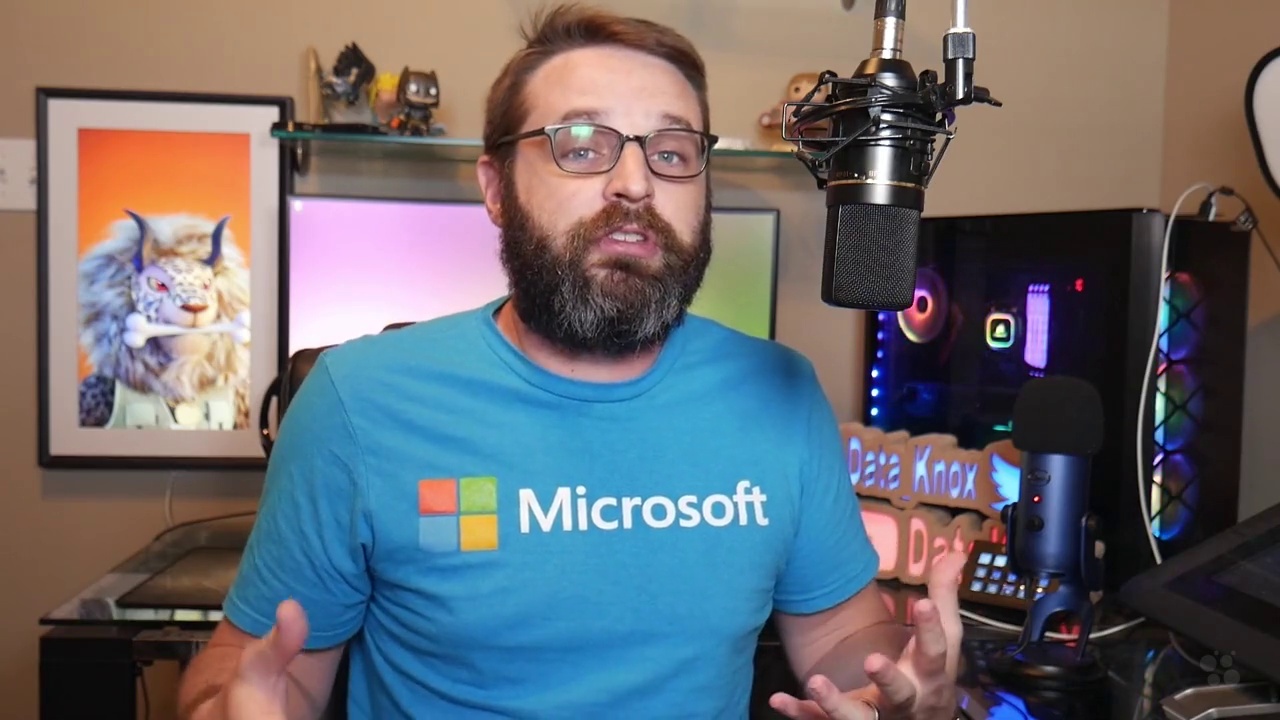1 What is Active Directory-
2 Whats New in Active Directory-
3 Installing Active Directory
4 Installing a New Tree or Child Domain 1C30C
5 Active Directory Management Tools
6 Installing AD DS Management Tools
7 Read-Only Domain Controller Overview
8 RODC Installation and Configuration
9 Domain Controllers in Azure
10 Flexible Single Master Operation Part One
11 Flexible Single Master Operations Part Two
12 Transfer a FSMO Role
13 Seize a FSMO
14 Domain Relationships
15 Trusts and Direction
16 Create a Trust
17 Verify a Trust and Selective Authentication
18 Intrasite Replication
19 Intersite Replication
20 Advanced Site Topics
21 Replication Quiz
22 User Account Basics
23 Edit a User Account
24 Automate User Account Creation
25 Limitations of Joining Computers to AD
26 Use Commands to Join a Domain
27 Introducing Active Directory Groups
28 Default Active Directory Group Accounts
29 Group Scope
30 Use PowerShell to Manage Groups
31 Implement Group Managed Service Accounts
32 Introducing Azure AD Connect
33 Synchronize the Azure AD Connect Tool
34 Password Hashes
35 Azure AD Connect Health
36 Synchronization Service Manager
37 Implement Azure AD Connect Cloud Sync
38 Integrate AD DS Azure AD and Azure AD DS
39 Why and When to Use Azure AD DS
40 Deploy the Managed Domain in Azure
41 Configure VNet DNS Settings
42 Join an Azure VM to the Managed Domain
43 Remote Server Admin Tools
44 Fix Azure AD Connect
45 Other Security Considerations for Azure AD DS
46 Summarize Azure AD DS Integration
47 Introduction to Group Policy
48 Group Policy Processing
49 Group Policy Scope of Management
50 Processing Adjustments
51 Processing Adjustments- WMI and Security Filtering
52 Group Policy Preferences Overview Part 1
53 Group Policy Preferences Overview Part 2
54 See Group Policy Preferences in Action
55 How to Survive Red Light Green Light
56 The Action CRUD Modes
57 Manage Preferences Common Settings
58 Implement Item-Level Targeting
59 Enumerating Policy Settings and Configuring the Central Store
60 Implement Group Policy in Azure AD DS
61 Manage Windows Servers in a Hybrid Environment
62 Windows Admin Center
63 Installing Windows Admin Center Gateway
64 Adding Servers to Windows Admin Center
65 Configure PowerShell Remoting
66 Configuring CredSSP and Kerberos Second Hop Remoting
67 Introducing Windows Server Monitoring and Management
68 Install Windows Admin Center
69 Add Inventory to Windows Admin Center
70 Connect WAC to Azure
71 Manage Servers from WAC
72 Powershell Remoting
73 Kerberos Constrained Delegation
74 Summarizing Windows Server Management
75 Manage Windows Servers and workloads by using Azure services
76 Using Azure Arc to Manage Servers
77 Assigning Azure Policy to an Azure Arc Server
78 Installing Log Analytics Agent on Arc Servers
79 Implementing Azure Automation on Arc Servers
80 Scheduling Runbooks on Arc Servers
81 Enable VM Enhanced Session Mode
82 Implement PowerShell Remoting
83 Implement PowerShell Direct
84 Enable Hyper-V Nesting
85 Hyper-V Quiz Review- Enhanced Session PowerShell and Nesting
86 Configure VM Memory
87 Configure Integration Services
88 Configure Discrete Device Assignment
89 Configure VM Resource Groups
90 Configure CPU Groups
91 Configure Hypervisor Scheduling
92 Standard and Production Checkpoints
93 Implementing Checkpoints
94 Introducing Hyper-V Replica
95 Implement Hyper-V Replica
96 Clustering Overview
97 Clustering Demo
98 VHD and VHDX Files
99 Configure VHDX Files
100 Configure Hyper-V Switch
101 Configure NIC Teaming
102 Introduction to Containers
103 Install Docker and Pull Images
104 Run a Container
105 Run a Container Website
106 Specify a Container Isolation Mode
107 Configure Container Networking
108 Manage Containers in Windows Admin Center
109 Manage Data Disks
110 Resize Azure VMs
111 Resize Azure VMs with CLI
112 Continuous Delivery for Azure Virtual Machines
113 Configure Connections to VMs - RDP and SSH
114 Configure Connections to VMs - Bastion
115 Network Summary
116 Introducing DNS on Windows Server 2022
117 How DNS Works
118 Setting Up DNS
119 DNS Record Types
120 DNS Zones
121 Reverse Lookup Zones
122 DNSSEC
123 Summarizing DNS on Windows Server
124 Introducing Azure Hybrid Name Resolution
125 Understand Azure-hosted DNS
126 Deploy Azure-hosted DNS
127 Understand Locally Hosted DNS
128 Implement Locally hosted DNS
129 Understand Hybrid Multi-Vnet DNS in Azure
130 Implement Hybrid Multi-Vnet DNS in Azure
131 Summarizing Hybrid DNS with Azure and Windows Server
132 Introducing DHCP on Windows Server 2022
133 How DHCP Works
134 Installing DHCP
135 Deploy Scopes and Options
136 DHCP Reservations
137 DHCP Failover
138 Integrate DHCP with DNS
139 Summarizing DHCP on Windows Server
140 Introducing IPAM
141 Install and Set Up IPAM
142 Manage DHCP
143 Manage DNS
144 Summarizing IPAM
145 Introducing Remote Connectivity to Azure
146 The Point of VPNs
147 Deploy the VNet
148 Deploy the VNet Gateway
149 Deploy the Local Network Gateway
150 Deploy the S2S Connection
151 Point to Site VPNs
152 Summarizing VPNs
153 Introducing NPS
154 What RADIUS Really Does
155 Connection Request Policies
156 Network Policies
157 The 802.1X Wizard
158 RADIUS Groups
159 Summarizing NPS
160 Introducing Advanced Hybrid Networking with Azure and Windows Server
161 Azure Network Adapter
162 Azure Relay
163 Azure Extended Networks
164 Azure Virtual WAN
165 Summarizing Advanced Hybrid Networks
166 Introducing Azure File Sync
167 How Azure File Sync Works
168 Deploy the Resources in Azure
169 Install Prereqs and Run Assessment Checks
170 Install the Agent
171 Configure the Sync Group
172 Summarizing Azure File Sync
173 Creating and Managing File Shares
174 The Real Point of File Shares
175 The Old School Method
176 The New School Method
177 File Share vs NTFS Permissions
178 Now Do it With Powershell
179 Summarizing File Shares
180 Introducing DFS
181 How DFS Works
182 Installing Roles and Deploying Namespaces
183 Configure Replication
184 Namespace Failover
185 Site Awareness
186 Deploy BranchCache
187 Summarizing DFS and BranchCache
188 Introducing Windows Server Storage
189 Disks Volumes and Filesystems
190 Storage Spaces
191 Data Deduplication
192 Storage Replica
193 Summarizing Windows Server Storage
194 Not Your Granddads Windows Defender
195 Create Windows Defender Application Control Policies
196 Deploy WDAC Policies
197 Preparing for Windows Defender for Endpoints Deployment
198 Onboarding Endpoints
199 Enable Windows Defender Credential Guard
200 Summarizing Windows Defender
201 Introducing Securing Windows OSs
202 Exploit Protection
203 SmartScreen
204 Account Policies
205 User Rights Assignment Policies
206 Security Options
207 Audit Options
208 Summarizing Securing Windows OSs
209 Introducing Securing Hybrid Active Directory Infrastructure
210 Multi-Factor Authentication
211 Multi-Factor Authentication Setup
212 MFA Service Configuration
213 RBAC Concepts
214 Working with RBAC
215 Privileged Identity Management
216 Azure Application Proxy
217 Summarizing Securing Hybrid Active Directory
218 Introducing Azure Tools for Securing Windows
219 The Big Picture for Azure Security
220 Microsoft Defender for Cloud
221 Microsoft Sentinel
222 Introducing Windows Server Network Security
223 Windows Defender Firewall and Connectivity Rules
224 Digging into Domain Isolation
225 Create the GPO Objects
226 Exempt ICMP Traffic
227 Authentication Exemptions
228 Configure IPsec
229 Create the Connection Security Rule
230 Verify the Security Associations
231 Summarizing Windows Server Network Security
232 Introducing Securing Windows Server Storage
233 Setting up Bitlocker on Windows PCs
234 Unlocking an Encrypted Hard Drive
235 BitLocker Enterprise Solutions
236 Configure a Key Vault for Azure Hard Drive Encyrption
237 Encrypt an Azure VM from the Portal
238 Use Azure CLI to Encrypt a VM
239 Use Powershell to Encrypt a VM
240 Summarizing Windows Device Hard Drive Encryption
241 Implementing Windows Server Failover Clustering
242 Failover Clustering Designs and Requirements
243 Create and Initialize an iSCSI Target
244 Deploy the Failover Cluster
245 Hybrid Quorum Configuration
246 Introducing Failover Cluster Management and Maintenance
247 Whats New in Windows Server 2022
248 Clutser-Aware Updating
249 Rolling OS Upgrades
250 Adding Roles to the FCI
251 Managing Clusters via Windows Admin Center
252 Introducing Stretch Clusters
253 Azure Multi-Region Replication Design and Requirements
254 Scaffold the Base Resources
255 Implement VNet Peering and Install Roles
256 Create the Clusters
257 Enable S2D
258 Implement Storage Replica between Clusters
259 Introducing HCI with S2D
260 Understand the Point of HCI
261 Understand Networking Requirements for S2D
262 Prepping Nodes for HCI
263 Implement S2D and CSVs
264 Deploy a VM
265 Manage S2D with WAC
266 Introducing Hybrid Backups with Azure
267 Consider Your Backup Objectives
268 Using Hyper-V Checkpoints
269 Backup an Azure VM
270 Restore an Azure VM
271 Backup a Local VMWare VM with MABS
272 Introducing Azure Site Recovery
273 Understand Azure Site Recovery Objectives
274 Replicate an Azure VM - The Easy Way
275 Replicate an Azure VM - The Old Way
276 Prepare for VMWare VM Replication
277 Deploy the Azure Site Recovery Appliance
278 Perform a Failover to Azure
279 Introducing Hyper-V Replicas
280 Planning for Hyper-V Replicas
281 Configuring Hyper-V Replica Settings
282 Virtual Machine Replication
283 Perform a Failover
284 Summarizing Hyper-V Replicas
285 Introducing Storage Migrations
286 The Storage Migration Plan of Attack
287 Picking the Right Tool
288 Perform a File Storage Migration with File Sync
289 Perform a Blob Storage Migration with AzCopy
290 Other Kinds of Storage to Consider
291 Summarizing Storage Migrations to Azure
292 Migrate VMWare VMs to Azure IaaS
293 Deploy and Configure the Azure Migrate Appliance in vCenter
294 Perform the Inventory Discovery
295 Perform a Migration Assessment
296 Begin Replication and Test Migrations
297 Perform the Migration
298 Summarizing VMWare Migration
299 Introducing Windows Server Migrations
300 Migrate to a Windows Server 2022 Hyper-V Host
301 Migrate IIS Web Apps to Windows Server 2022
302 Migrate a Fileshare with Robocopy to Windows Server 2022
303 Migrate a Print Server to Windows Server 2022
304 Migrate a DHCP Server to Windows Server 2022
305 Summarizing Windows Server Migrations
306 Migrate a Web App from IIS to Azure
307 The Path to Migration
308 Prep Windows Server for ASP.NET Core Hosting
309 Deploy the Web App to IIS
310 Download the Migration Assistance Tool
311 Perform the Migration
312 Summarizing Migrating Web Apps to Azure
313 Introducing AD DS Migration to Windows Server 2022
314 Planning Your Migration to Windows Server 2022
315 Prep Your Environment for Migration
316 Migrate FSMO Master Roles
317 Decom the Old Server
318 Upgrade the Domain and Forest
319 Summarizing AD DS Upgrades
320 Introducing Interforest Migrations
321 Establish Interforest Connectivity
322 Create the Admin Account
323 Configure SID History Migration
324 Install SQL ADMT and PES
325 Perform the Migration
326 Summarizing Interforest Domain Migrations
327 Introducing Windows Monitoring
328 Working with Perfmon
329 Working with Event Logs
330 Monitoring with Windows Admin Center
331 Exploring System Insights
332 Monitoring Systems with Azure
333 Summarizing Windows Monitoring
334 Troubleshooting Windows and Hybrid Networking
335 Troubleshooting Methodologies
336 Validate Routing and Connectivity
337 Capture Packets in Windows Admin Center
338 Troubleshoot DHCP Issues
339 Troubleshoot DNS Issues
340 Troubleshoot Azure Networking with Network Watcher
341 Troubleshooting Azure Virtual Machines
342 Trouble with Deploying an Azure VM
343 Trouble with Booting a VM
344 Trouble with VM Performance
345 Trouble with VM Connectivity
346 Trouble with the VM Extension
347 Trouble with Disk Encryption
348 Introducing Active Directory Troubleshooting
349 Digging into Event Viewer
350 Event Tracing with tracelog.exe
351 Understand Domain Controller Replication
352 Digging into Replication with PowerShell
353 Getting Quick Replication Status and More with Dcdiag.exe
354 Utilizing Repadmin.exe











